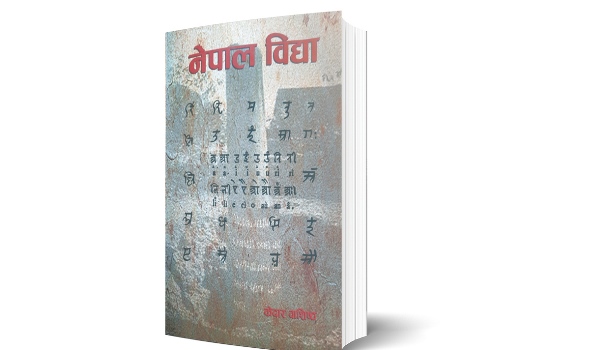A Window To Know Your Country

Modnath Dhakal
Lumbini, the birthplace of Gautam Buddha, is not just a geographical location or a fountain of faith of about 10 per cent of the world population, it has also been a subject of politics and economy.
Lumbini's true location was marked by a pillar erected by Ashoka, a Maurya Emperor in the third century, in Nepal's Rupandehi district. Although archaeological pieces of evidence and religious scriptures clearly stated the birthplace of Lord Buddha lies in Nepal, our immediate neighbour, India, deliberately denied this fact for centuries and tried to establish a replica of Lumbini in its territory.
India was forced to come out of the British-era colonial mindset when the UNESCO declared Lumbini a world heritage site in 1997, recognising its religious, cultural, spiritual and archaeological values for the world. India is also claiming that Kapilvastu is in its territory that lies nearby Nepal-India border.
The spiritual heritage was pushed to the controversy by the Indian government and British scholars and archaeologists. But their vested interests couldn't be fulfilled. The controversy over the birthplace of Lord Buddha has long been a political issue.
Millions of tourists reach Lumbini to have spiritual blessings. It is not only helping create Nepal's image as a 'peace zone' but also attracting a large number of foreign tourists and pilgrims to Nepal. So, it is an economic issue too. What India wanted was to have all four important locations – Lumbini (birth), Bodh Gaya (enlightenment), Sarnath (sermon) and Kushinagar (parinirvana) – of Buddha's life in its map so that it could attract more pilgrims and tourists.
Nepal and Israel are perhaps the two countries that had the origins of two of the world's great religions but have very few followers of this faith. There is only 9 per cent of Buddhists in Nepal. However, most of the Nepali people worship Lord Buddha while the region's largest religion Hinduism considers him the ninth incarnation of Lord Bishnu. Therefore, Lumbini evokes both faith and sentiment among Nepalis who are compelled, repeatedly, to shout out and present the proof that the birthplace of Lord Buddha lies in Nepal.
This is what 'Nepal Bidya: Siddanta Ra Prayog' establishes through an extensive study of national and international literature and historical artefacts. Author Kedar Bashistha answers a hunting question- Why does the southern neighbour keep on trying to push the 'holy place' into controversy and want to have it within its territory? He also analyses the politics and business being perpetrated in the name of Lord Buddha.
Bashistha presents the chronological developments in finding Lumbini from Maurya Emperor Ashoka to German Indologist Dr Alois Anton Fuhrer and Khadga Shumsher Rana to present day. He sheds light on the historical facts distorted by India and British archaeologists and unhealthy competition between the German Fuhrer and British L. A. Waddell and V. A. Smith.
However, the book is not about the history of Lumbini. It is a volume on ‘Nepalology’ or knowledge about the ‘country’ Nepal. It tries to bring forth the importance of that knowledge on society, economy, history, geography, commerce, culture and other relevant areas. Bashistha traces the entire history and practice of ‘Nepalology’ in and out of Nepal and excavates interesting facts from ancient scriptures like the Vedas and ancient civilisations like the Greek and Roman. The historical analysis of Lumbini is made to solidify the knowledge of Nepal since an impressive amount of literature about Nepal that exists globally is about the Buddha’s birthplace.
The second section of the book is dedicated to the existence of the Nepali language. In this section, the author vigorously discusses how the country got its name while discussing various cultures, languages and human mobility in the Eurasian region. Readers will be amazed to see their language that originated from Sanskrit is an amalgamation of other rich languages like Latin, Arabic, Armenian, Persian and English.
The author says that Nepal is not poor when it comes to its civilisation, culture and heritage. But the nation is poor in conducting investigations, researches, analysis and using these treasure troves. “Many others have benefitted from our wealth but we are lagging behind them and have become fence-sitters for long. We should be a guide, and this is not impossible,” says Bashistha.
The 418-page text-book size volume has more than 1450 citations from other books, scholarly articles, historical letters, documents and artefacts including stone inscriptions. General readers might find the first unit of the book more academic and less interesting but it establishes the need for education about Nepal.
The language is repetitive which should be improved in the future edition of the book. However, the second and third unit on Lumbini and language are written in a lucid narrative that will hold the readers’ attention.
There is no doubt that you will appreciate the efforts of the author and the way he tells the story of your language and history. At the same time, you would realise the richness of Nepal’s history, culture and language, and feel pride in it. ‘Nepal Bidya’ is a treasure Bashistha has given to the academia, people and the country.
Recent News

Do not make expressions casting dout on election: EC
14 Apr, 2022
CM Bhatta says may New Year 2079 BS inspire positive thinking
14 Apr, 2022
Three new cases, 44 recoveries in 24 hours
14 Apr, 2022
689 climbers of 84 teams so far acquire permits for climbing various peaks this spring season
14 Apr, 2022
How the rising cost of living crisis is impacting Nepal
14 Apr, 2022
US military confirms an interstellar meteor collided with Earth
14 Apr, 2022
Valneva Covid vaccine approved for use in UK
14 Apr, 2022
Chair Prachanda highlights need of unity among Maoist, Communist forces
14 Apr, 2022
Ranbir Kapoor and Alia Bhatt: Bollywood toasts star couple on wedding
14 Apr, 2022
President Bhandari confers decorations (Photo Feature)
14 Apr, 2022










